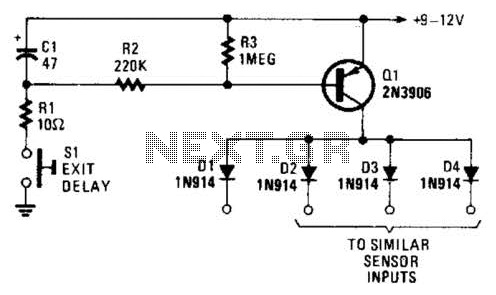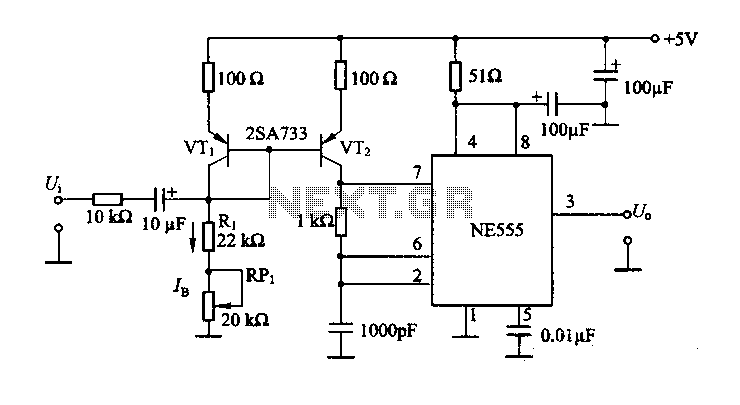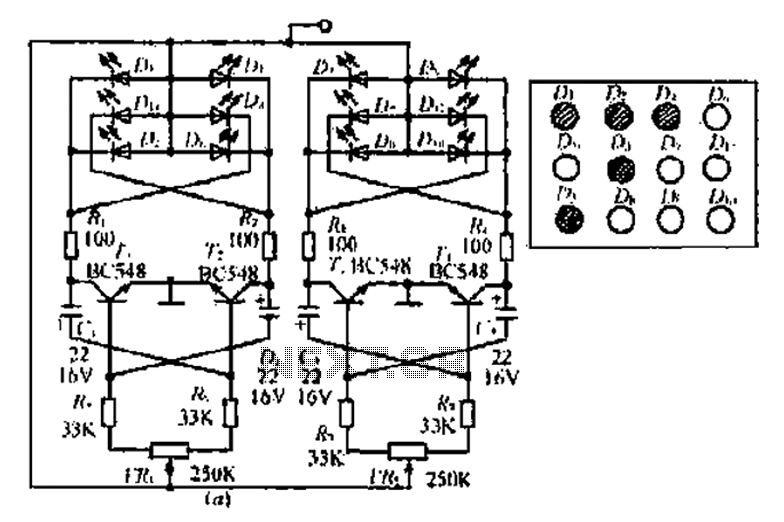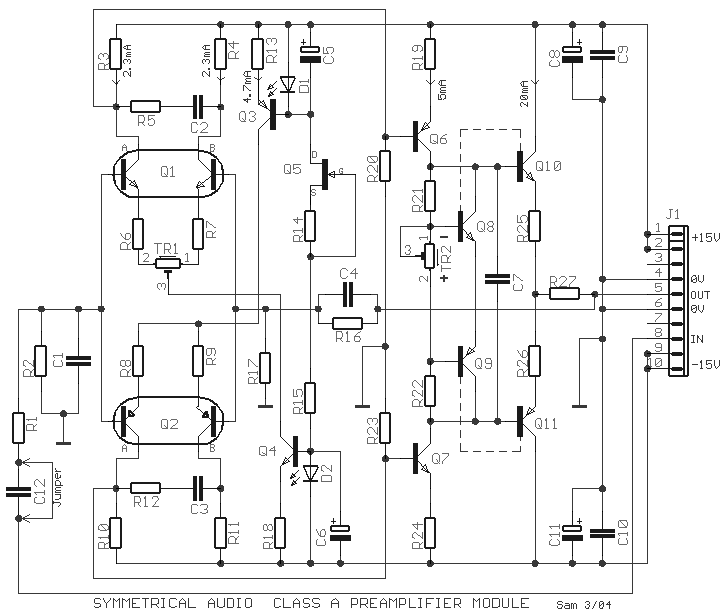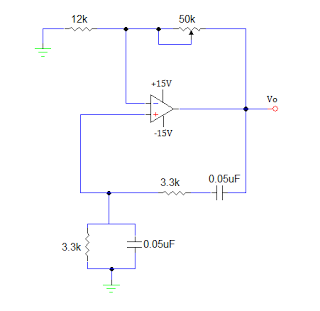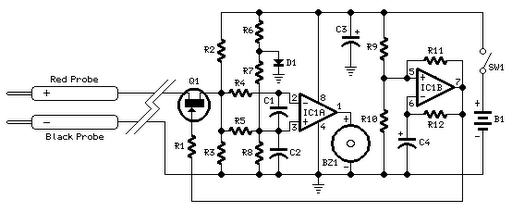
2 x 60 W audio amplifier circuit
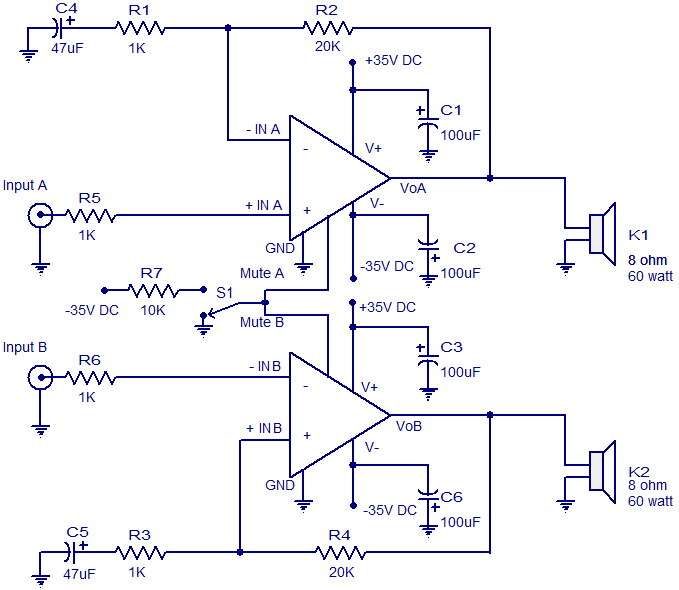
The circuit diagram presented is for a 2 x 60 Watt stereo amplifier utilizing the LM4780 from National Semiconductors. The LM4780 is an excellent audio amplifier integrated circuit capable of delivering 60W RMS power output per channel into 8-ohm speakers. It features very low total harmonic distortion (less than 0.5% at full output) and a power supply rejection ratio (PSRR) of 85 dB. The IC requires minimal external components and includes a built-in mute function. The LM4780 is fully protected using proprietary SPiKe technology and boasts a signal-to-noise ratio exceeding 97 dB. This circuit is well-suited for applications such as component stereos, self-powered speakers, home theater systems, and compact stereos.
The 2 x 60 Watt stereo amplifier circuit designed with the LM4780 integrates several crucial components to achieve high-quality audio reproduction. The LM4780 IC serves as the core of the amplifier, providing efficient power amplification while maintaining audio fidelity. The low total harmonic distortion (THD) ensures that the output sound closely resembles the input signal, making it ideal for discerning listeners.
The power supply rejection ratio (PSRR) of 85 dB indicates that the amplifier can effectively minimize the impact of power supply fluctuations on audio performance, which is critical in maintaining sound clarity. The built-in mute function allows for easy management of audio output, providing convenience during operation.
In terms of protection, the SPiKe technology incorporated within the LM4780 safeguards the amplifier from overcurrent and overheating conditions, enhancing reliability and longevity. The high signal-to-noise ratio (SNR) of over 97 dB signifies that the amplifier produces minimal background noise, ensuring a cleaner listening experience.
The circuit design requires few external components, which simplifies assembly and reduces potential points of failure. This makes the LM4780-based amplifier an attractive option for various audio applications, including component stereos, self-powered speakers, home theater systems, and compact stereo setups. The overall design emphasizes both performance and ease of integration, making it a versatile choice for audio enthusiasts and professionals alike.The circuit diagram shown here is of a 2 x 60 Watt stereo amplifier based on the LM4780 from National Semiconductors. LM4780 is a superb audio amplifier IC capable of delivering 60W Rms power output / channel into 8 ohm speakers.
The LM4780 has very low total harmonic distortion (less than 0. 5% at full output) and has a power supply rejection rati on (PSRR) of 85 dB. The IC requires very few external components and has a built in mute facility. The LM4780 is completely protected using their trademark SPiKe technology and has a signal to noise ratio greater than 97dB. The circuit given here is well suitable for applications like components stereos, self powered speakers, home theatre systems, compact stereos etc.
🔗 External reference
The 2 x 60 Watt stereo amplifier circuit designed with the LM4780 integrates several crucial components to achieve high-quality audio reproduction. The LM4780 IC serves as the core of the amplifier, providing efficient power amplification while maintaining audio fidelity. The low total harmonic distortion (THD) ensures that the output sound closely resembles the input signal, making it ideal for discerning listeners.
The power supply rejection ratio (PSRR) of 85 dB indicates that the amplifier can effectively minimize the impact of power supply fluctuations on audio performance, which is critical in maintaining sound clarity. The built-in mute function allows for easy management of audio output, providing convenience during operation.
In terms of protection, the SPiKe technology incorporated within the LM4780 safeguards the amplifier from overcurrent and overheating conditions, enhancing reliability and longevity. The high signal-to-noise ratio (SNR) of over 97 dB signifies that the amplifier produces minimal background noise, ensuring a cleaner listening experience.
The circuit design requires few external components, which simplifies assembly and reduces potential points of failure. This makes the LM4780-based amplifier an attractive option for various audio applications, including component stereos, self-powered speakers, home theater systems, and compact stereo setups. The overall design emphasizes both performance and ease of integration, making it a versatile choice for audio enthusiasts and professionals alike.The circuit diagram shown here is of a 2 x 60 Watt stereo amplifier based on the LM4780 from National Semiconductors. LM4780 is a superb audio amplifier IC capable of delivering 60W Rms power output / channel into 8 ohm speakers.
The LM4780 has very low total harmonic distortion (less than 0. 5% at full output) and has a power supply rejection rati on (PSRR) of 85 dB. The IC requires very few external components and has a built in mute facility. The LM4780 is completely protected using their trademark SPiKe technology and has a signal to noise ratio greater than 97dB. The circuit given here is well suitable for applications like components stereos, self powered speakers, home theatre systems, compact stereos etc.
🔗 External reference
